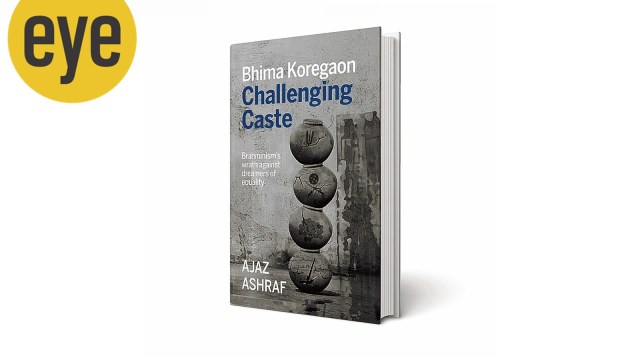Ajaz Ashraf’s Bhima Koregaon: Challenging Caste exposes the machinations that put 16 activists in jail without implicating evidence
The book explains “Brahminism’s wrath against dreamers of equality”. Its reportage-style writing untangles the state agencies’ conspiracy theories with ease
 This book follows Alpa Shah’s The Incarcerations, on the same issue, already a topic of a documentary and soon-to-be-released Hindi film. (Source: Amazon)
This book follows Alpa Shah’s The Incarcerations, on the same issue, already a topic of a documentary and soon-to-be-released Hindi film. (Source: Amazon)Behind Maharashtra’s image as the richest and most progressive state lies a complex web of social groups, some of which are perennially at loggerheads. It is necessary to understand that everyone domiciled in this state could be Marathi but not necessarily a Maratha. Every Maratha is Maharashtrian but the reverse may not be true. Marathas, over 32 per cent of the state’s population, are its most dominant caste group, followed by OBCs at around 27 per cent. According to the 2011 census, Dalit Hindu Mahars, formerly untouchables, comprise over one-third of the state’s Scheduled Caste population. Though the state has around 12 percent Muslims, social friction has largely been among non-minority groups — Brahmins, with just over 3.5 per cent, playing a key role in it.
After the Peshwai — a pejorative term to describe the era under Brahmin Peshwas of Pune — came to an end in 1817, signifying the start of colonial rule, the East India Company recruited Mahars in large numbers for military duties. Fighting on behalf of the Company, they defeated the last of the Peshwas led by Bajirao II in the Battle of Bhima Koregaon, a small village in today’s Pune district, on January 1, 1818. There stands a pillar inscribed with names of a dozen Mahars martyred in the battle. The day is marked as a victory of the downtrodden ‘untouchables’ against the regressive Brahminical order.
But it became news recently when bicentenary celebrations of the Battle of Koregaon on January 1, 2018, drew larger crowds to Bhima Koregaon than in past years. There was already tension there because, just a few days prior on December 29, 2017, the memorial was found desecrated. The issue was raised in a congregation of Dalit and Bahujan groups led by the Elgar Parishad, on December 31, 2017. The state police blamed inflammatory speeches made during the Elgar Parishad that, according to them, led to the violent clashes the following day. Most importantly: the state was witnessing a social turmoil as Marathas had hit streets in huge numbers demanding reservations. The move was seen as a ploy to corner chief minister Devendra Fadnavis, BJP’s Brahmin face. On one hand, the state’s most dominant social group was up in arms against the BJP and on the other, at Bhima Koregaon, SCs and Dalits were seen opening up a new front against the Hindutvawadi party.
Caught between the devil and the deep sea, the BJP, knowingly or unknowingly, overlooked the social context and saw it through a ‘Left-Right’ prism. It dismissed developments at Bhima Koregaon as left-wingers’ attempt to malign the saffron party. Some over-zealots in the BJP, in an effort to undermine developments at Bhima Koregaon, coined the term Urban Naxals.
Journalist Ajaf Ashraf’s brilliant book Bhima Koregaon: Challenging Caste explains “Brahminism’s wrath against dreamers of equality”. His reportage-style writing untangles the state agencies’ conspiracy theories with ease. Based on interviews, research and archival material, he narrates the state’s complicated and delicate social underbelly above which is built the facade of a ‘developed state’. The book brings to the fore the reality of caste discrimination prevalent even in the 21st century.
Ashraf gives interesting anecdotes from the Peshwa-Raj, some of which border on hearsay and can be described as propaganda against Brahmins. On the other hand, the state agencies, in an effort to prove Elgar Parishad leaders “Maoist terrorists”, arrested 16 professors and lawyers without any implicating evidence. Some of them were jailed even without trial. Nothing was proved in the court of law. Ashraf exposes the machinations with micro-details.
This book follows Alpa Shah’s The Incarcerations, on the same issue, already a topic of a documentary and soon-to-be-released Hindi film. This shows the importance of Bhima Koregaon in understanding Maharashtra’s social history. Though there is a danger of Ashraf’s book being dismissed as a “left-winger’s” point of view, there is nothing from the ‘other side’ to counter it besides allegations and insinuations.
- 01
- 02
- 03
- 04
- 05































